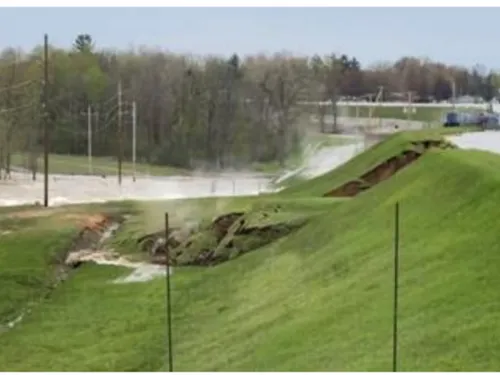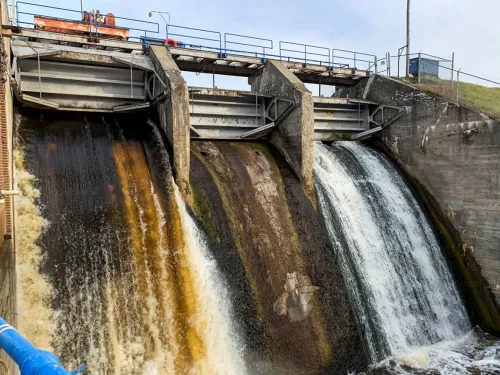Edenville Dam (Michigan, 2020)
On May 19, 2020, following several days of rain, failure occurred at both Edenville and Sanford Dams, which are located in central Michigan in the United States, with resulting downstream flooding that caused extensive property and environmental damage. Fortunately, there was no loss of life because, in the face of uncertainty about how events would unfold, a cautious decision was made to evacuate about 10,000 people starting about 18 hours before it was clear that either dam was going to fail, resulting in an estimated 10 to 20 lives saved.
These dams were two of four dams which were all owned by the same dam owner and located in series along the Tittabawassee River. The other two dams were Secord Dam and Smallwood Dam. Secord is the most upstream of the four dams, followed further downstream by Smallwood, Edenville, and, finally, Sanford (see Figure 1 on the Photos Tab). All four of the dams included earth-fill embankments, radial-gated concrete spillways, and powerhouses; the layout of Edenville Dam is shown in Figure 2 (see the Photos Tab), with the failure location noted in the lower right of this figure.
All four dams were built from 1923 to 1925, over a period of 1.5 years, and construction was completed a year ahead of schedule, possibly for financial reasons (regarding making the Edenville power plant operational, a memo during the construction phase states that “this should be done as quickly as possible so that the plant will begin returning a revenue”).
Edenville Dam, which created Wixom Lake, had a maximum height of 52 feet (16 meters), a total length of about 6,130 feet (1,868 meters), and a lake storage at normal pool of about 36,000 acre-feet (44 million cubic meters), and it provided about half of the total power and revenue from the four dams. At the failure section, Edenville Dam had a height of between 30 and 32 feet (9.1-9.8 meters).
Project Ownership and Regulation
There were three owners of the dams during the century-long history of the project, with the owner at the time of the failures being Boyce Hydro. All four dams were built to generate hydropower, rather than for recreation or flood control, and, by 1998, all four dams were regulated by the United States Federal Energy Regulatory Commission (FERC). It was recognized around the time the dams came under FERC regulation that the spillway capacity of Edenville Dam did not meet the FERC requirement of being able to pass the probable maximum flood (PMF) without overtopping, and the dam could pass only a fraction of the PMF (about 20% to 50%, depending on varying estimates of the spillway capacity and the PMF). All three dam owners justifiably contended that they did not have the financial capacity to upgrade the spillway capacity to pass the full PMF, since the cost of doing so would have been between $5 and $10 million, whereas the total hydropower annual revenue from all four dams was about $2 million, with a net annual income which was a fraction of the revenue.
Boyce Hydro developed several design concepts to upgrade the spillway capacity over a period of a decade, though none of them went forward to final design or construction. As a last resort action, FERC finally revoked the Edenville hydropower license in 2018, while the other three dams remained regulated by FERC. Therefore, at the time of the failures in 2020, Edenville Dam’s powerhouse was inactive, whereas the other three dams were active hydropower facilities. Since Edenville provided about half of the total hydropower revenue from the four dams, revoking the Edenville license resulted in the project operating at a net loss and Boyce Hydro was pressured to sell the dams.
Starting in 2018, two months before the Edenville license was revoked, ownership of the four dams was indeed in transition to the Four Lakes Task Force (FLTF), with the transition to be completed in 2022 (two years after the dams failed). The FLTF was legally a “delegated authority” of the two counties in which the dams were located, and therefore ownership by FLTF was effectively public ownership of the dams. As a legal representative of the two counties, once the FLTF would have taken full ownership of the four dams and their lakes in 2022, the FLTF would have legally had the authority to collect annual fees from the property owners adjacent to the lakes, and these funds would have been used to operate, maintain, and upgrade the dams, including increasing the spillway capacity at Edenville Dam.
Once the Edenville license was revoked, Edenville Dam was regulated by the Michigan Department of Environment, Great Lakes, and Energy (EGLE). In this regard, it is noteworthy that the EGLE requirement for the spillway capacity was the “half PMF” (defined as the flood resulting from half of the probable maximum precipitation). The difference in the spillway capacity requirements of FERC versus EGLE is stark, and illustrates uncertainty about what would constitute a “safe enough” design for this dam.

Geotechnical Failure Mechanism
The physical mechanism of the failure of Edenville Dam was static liquefaction (sudden loss of soil strength) in a section of the embankment comprised of loose sandy soils (see Figure 2 on the Photos Tab for failure location), which resulted in a sudden instability failure of the downstream slope and then breach of the reservoir through the dam (see Figure 3 on the Photos Tab). About two to three hours after Edenville Dam failed, the resulting downstream flooding caused an overtopping failure of Sanford Dam.
The static liquefaction occurred when the impounded Wixom Lake reached a level that was about 3 feet (1 meter) higher than the previous high level which occurred in 1929. The liquefaction likely initiated near the downstream toe of the dam when pore pressures reached a critical threshold, and then propagated in the upstream direction. The embankment was vulnerable to static liquefaction because of the following factors:
- The soils were loose because they were apparently not compacted as required in the construction specifications (“all materials of the earth fills shall be spread and harrowed in horizontal layers and compacted before any layer exceeds nine inches in thickness”), as evidenced by soil blowcounts and absence of compaction equipment in construction photos.
- The construction specifications required the embankment to be constructed with an impervious upstream section (“upstream of the center line of the earth fill the material shall be selected of clay, gravel and loam mixed so as make as impervious an earth fill as possible”), but it was apparently mostly or entirely constructed as a homogeneous embankment comprised of sands.
- The downstream slope was steeper than the required 2:1 (Horizontal:Vertical) or flatter in some locations, with an average slope of about 1.8:1 at the failure section.
-
A missing or blocked foundation drain in the proximity of the failure section may have contributed to the liquefaction failure by increasing pore pressures and raising the phreatic surface in the failure section (see Figure 4 on the Photos Tab).
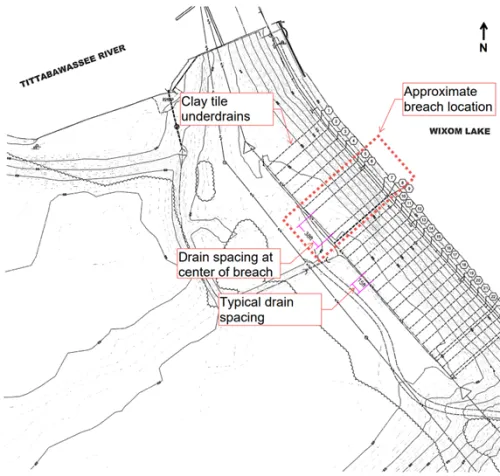 Figure 4 - Missing or blocked foundation drain near the Edenville Dam failure section. (Photo Source: 2012 Underdrain Survey via Independent Forensic Team Final Report)Missing or blocked foundation drain near the Edenville Dam failure section. (Photo Source: 2012 Underdrain Survey via Independent Forensic Team Final Report)
Figure 4 - Missing or blocked foundation drain near the Edenville Dam failure section. (Photo Source: 2012 Underdrain Survey via Independent Forensic Team Final Report)Missing or blocked foundation drain near the Edenville Dam failure section. (Photo Source: 2012 Underdrain Survey via Independent Forensic Team Final Report)
During the century after construction, particularly once the dam came under FERC regulation about three decades before the failure, embankment stability analyses were performed for only two locations where there were specific seepage and stability concerns, and these analyses were not sufficient in scope to evaluate the stability of the entire 6,000-foot (1,830-meter) length of the Edenville embankments. In 1993, FERC recognized this (“because the embankments are so long … additional borings will be necessary”), however they did not follow up to ensure that additional borings were obtained. Moreover, unconservative assumptions had been made for soil parameters and slope geometry in the slope stability analyses, and if more accurate assumptions had been made, inadequate factors of safety for conventional slope instability would have been identified, even if the potential for static liquefaction was not specifically recognized.
The net result was that the stability deficiency of the embankment section which failed was never recognized. If this vulnerability had been recognized, it could have been remediated by slope flattening or buttressing, which the dam owners would have been able to afford, and which had already been done at other locations. Such remediation would likely have prevented the static liquefaction failure.
Hydrology
The Wixom Lake level at the time of the failure was about 5.5 feet (1.7 meters) higher than the normal lake level, and about 1 to 1.5 feet (0.3 to 0.5 meters) below the crest of the dam. The unusually high lake level, relative to the previous 1929 high level which was 3 feet (1 meter) lower, was caused by an unusual combination of factors related to where and when the rain fell, as well as unusually impervious ground conditions which greatly increased the runoff from the rain, resulting in 100- to 200-year flooding being produced by a 25- to 50-year rainfall.
The unusually impervious ground conditions were likely due to the presence of partially frozen ground over much of the 978 square miles (253,000 hectares) of the watershed, especially the eastern half of the watershed where coniferous swamp was prevalent. Grou 4nd freezing was likely induced by a 10-day period of overnight freezing temperatures which immediately preceded rains which began on May 14, with temperatures at or near record lows during five of those ten days. This phenomenon of high runoff due to ground freezing preceding heavy rain was unforeseen for Edenville Dam, but was not entirely unforeseeable or unprecedented. Specifically, there were two reports from 1932 and 2011 documenting ground freezing and other dam failures in and near the watershed and, in addition, a 2014 failure of a dam near the Edenville watershed was investigated by EGLE and concluded to also be caused by rainfall following ground freezing.
Counterfactually, if the dam had not had an embankment instability failure, the lake would have risen a few more inches (several centimeters) and then receded, without overtopping the dam, and therefore an overtopping failure would not have occurred.
Human factors
Going all the way back to the deficient construction of Edenville Dam in the 1920s, the failure was preceded and preconditioned by decades of interactions and effects of human and physical factors. The overall set of interactions was complex, thus making the “sociotechnical” dam system complex, and eventually conditions unluckily lined up in a way that resulted in failure of the dam.
A simplified fault tree, which hierarchically outlines the factors contributing to the failure, is shown in Figure 5 on the Photos Tab. In terms of physical factors, the fault tree shows that the failure was due to a combination of geotechnical factors (left branch) and hydrologic factors (right branch). The geotechnical factors further branch into factors related to the embankment soils and the downstream slope geometry. The hydrologic factors branch into factors related to the inflow and outflow of the lake. Human factors associated with these physical factors are noted in blue, and it can be seen that human and physical factors were intertwined through their interactions.
As noted in this fault tree, the lake level was influenced by gate operations. The independent forensic team found that the gates (see Figure 6 on the Photos Tab) were opened in a timely manner, but the gates were not fully opened and therefore did not fully clear the water surface to enable unobstructed weir flow. The gates were not fully opened because, based on observations during prior gate testing, there was concern that a structural connection in the gate hoisting mechanism might fail if an attempt was made to fully open the gates. If the gates had been fully opened, the peak lake level would have been about 1 foot (0.3 meters) lower, and it is uncertain whether this much reduction in peak lake level would have prevented the embankment instability failure.
Primary Drivers of Failure
For Edenville Dam, with respect to goals of the various stakeholders, there were strong pressures to generate power and revenue, reduce costs and increase profit, maintain property values, collect property taxes, protect the environment, and provide recreational benefits. These goals were all in opposition to the goal of dam safety, and some of these goals were in competition with each other, resulting in the various stakeholders being caught in a complex “game” which was substantially non-cooperative. From a game theory perspective, the stakeholders can be viewed as having acted rationally in pursuing their individual goals, but collectively their decisions resulted in an outcome which was bad for all of them.
The value of the recreational benefits provided by the lake created by Edenville Dam, as well as the higher property values and additional property taxes collected by the counties, far exceeded the hydropower revenue generated by the dam, and also far exceeded the costs of maintaining and upgrading the dam; therefore, the existence of the dam could be economically justified even if it did not generate any power. However, in a misalignment of benefits and costs, the primary beneficiaries of the dam were not the dam owners who solely bore the costs of managing the dam, but rather the counties and the lakefront property owners who captured, at no cost to them, almost the entirety of the benefits of the lake created by the dam.
Prior to the FLTF taking ownership of the four dams, there was no financial mechanism, such as a public-private partnership, that enabled and incentivized the counties and lakefront property owners to contribute to paying the costs of Edenville Dam. Had such a mechanism existed, there could have been ample funding to upgrade the spillway capacity of the dam, and if that had been done before the May 2020 storm, the rise in the lake could have been kept to a low level, thereby preventing the instability failure of the embankment.
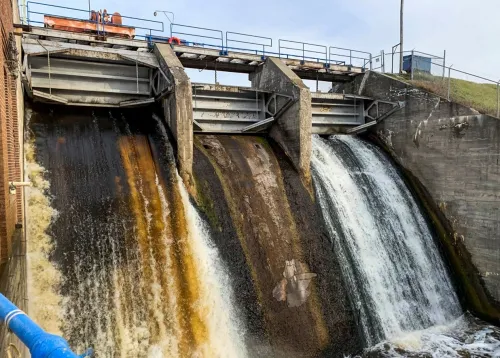
Risk Management, Safety Culture, and Best Practices
There were inadequacies in dam safety risk management that primarily involved ignorance about the existence of the risks associated with the dam, and this was in turn mainly due to inadequate industry practices for geotechnical slope stability evaluation as well as hydrologic evaluation of cold-season runoff characteristics in watersheds subject to ground freezing.
There was also apparently a significant degree of complacency and possibly overconfidence during the construction of the dam, which resulted in the dam’s susceptibility to static liquefaction and embankment stability safety margins that were generally below average compared to other embankment dams of similar height that were built in Michigan during the 1910s through the 1930s. This may have been due to a general lack of quality control during construction, a desire to reduce construction costs, and/or a desire to complete the construction ahead of schedule in order to start generating power and revenue.
While the failure was unforeseen, it was not entirely unforeseeable. During the century after construction, some warning signs were missed related to the potential for embankment instability (e.g., low soil blow counts, construction photos indicating that the embankments were not compacted, and slopes which were visibly steep) and the potential for high lake levels (e.g., reports documenting past ground freezing and dam failures), and many barriers that were intended to provide checks and balances were overcome to eventually produce the dam failure. Missing these warning signs reflects human fallibility in many aspects.
More broadly and fundamentally, the fact that the warning signs were missed by a large number of engineers over a period of several decades indicates that it was long-term inadequacy of general industry practices which resulted in not recognizing and addressing the deficiencies and warning signs that preceded the failure. The failure therefore cannot reasonably be blamed on any one individual, group, or organization.
Luck
When there has been a bad outcome, such as a dam failure, a judgment of whether there has been bad luck can be made relative to three aspects:
- Likelihood and Predictability: Can the event be viewed as having been statistically highly unlikely relative to normal human experience and expectations (e.g., a “perfect storm”), and therefore not likely to have been predicted?
- Control: Could the event have not been readily prevented (e.g., an extreme earthquake)? In other words, did people lack control of the outcome?
- Sensitivity to “What If” Counterfactuals: Would the event not have occurred, or would the consequences have been less, if the circumstances had been slightly different? In other words, would the bad outcome have been avoided if the world had been a counterfactual world which was not quite the same as the actual world? Are there scenarios for what “almost happened” that would have led to a “near miss” rather than a bad outcome (e.g., narrowly missing versus hitting a tree when driving off the road)?
An affirmative answer to one or more of those questions is usually viewed as justifying an attribution of bad luck to the event. In the case of the Edenville Dam failure, the following are examples of bad luck which contributed to the failure:
- Embankment variability. The Edenville Dam embankments totaled about 6,000 feet (1,830 meters) in length, and it was only a failure section about 40 to 80 feet (12 to 24 meters) long that failed in May 2020 when the lake rose to a record high level. This indicates that, despite the dam generally not being constructed in accordance with the design plans and construction specifications, it was a section of the embankment which represented only about 1% of the length of the dam that had a particular combination of physical characteristics sufficient to result in failure of that section when the lake rose. Therefore, it is possible that there was an element of bad luck in the failure section having the particular characteristics that it had. A related consideration is that, unlike many other locations of the downstream slope of the dam, the failure section did not exhibit significant seepage emerging at the downstream slope. Lack of such seepage is generally considered to be a favorable performance indicator for an embankment dam. However, in the particular case of Edenville Dam, in locations where significant seepage had been observed at the downstream slope, embankment overlays had been constructed, and it could be expected that an overlay would have been placed at the failure section if, counterfactually, seepage had been observed there. If such an overlay had been placed at the failure section, the static liquefaction failure would likely have been prevented. Therefore, it is possible that it was bad luck that significant seepage did not occur, or was not observed, at the downstream slope of the failure section.
- Unusually high runoff into the lake. The particular combination of physical circumstances that resulted in high runoff into the lake from the watershed in May 2020 was unusual, unlikely, and therefore could be considered to be unlucky. In considering the counterfactuals of what might have happened if the physical circumstances in the watershed had been slightly different in May 2020, it is likely that the runoff into the lake, and therefore the rise in the lake, would have been much less if there had been less coniferous swamp in the watershed, if the rain had been less in the coniferous swamp areas of the watershed, if the temperatures during the cold period of 10 days had been a few degrees warmer, if the moderate rain on May 14 and 15 had not occurred or been less, and/or if the rain on May 18 had been less. Again, it could be viewed as bad luck that none of these conditions that would have reduced the runoff occurred, and that instead they all lined up to produce the unusually high runoff. On the other hand, if one or more of these conditions had been worse with respect to increasing the runoff, it is entirely plausible that the runoff into the lake would have been sufficient to overtop the dam, which would have resulted in dam failure if the embankment stability failure counterfactually had not occurred. Moreover, the consequences of an overtopping failure could have been worse than those of the actual failure which occurred in May 2020, because an overtopping failure might have resulted in simultaneously breaching the dam in more than one location along the approximately 6,000-foot (1,830-meter) length of the embankments, resulting in an increase in the breach discharge and downstream flooding. Therefore, there may have been an element of good luck that the failure consequences were not more severe than they actually were.
- Timing of the Storm in May 2020. FLTF had planned to significantly increase the spillway capacity to at least be sufficient to meet EGLE’s “half PMF” requirement. Counterfactually, if this spillway capacity increase had been completed before the May 2020 storm or if that storm had occurred a few years in the future, after the spillway capacity had been upgraded, the lake level could likely have been kept several feet (more than one meter) lower, and therefore the embankment instability failure almost certainly would have been prevented. Since the spillway capacity increase was planned by FLTF and likely would have been completed within a few years after 2020, the timing of the storm in May 2020 can be viewed as reflecting bad luck. However, it should be noted that the embankment would have remained vulnerable to instability failure during future extreme floods if that vulnerability had not been identified and remediated.
Conclusion
As is often the case with dam failures, while bad luck was a contributor to the Edenville Dam failure, the failure can not simply be attributed to bad luck alone. There were numerous human judgments, decisions, actions, and inactions related to the dam that shaped the physical history of the dam in a way that ultimately set the stage for the failure of the dam in 2020. If different judgments and decisions had been made, or different actions taken, the failure could undoubtedly have been prevented.
Broadly, as with most dam failures, the Edenville Dam failure must be understood in terms of the history of the overall sociotechnical system for financing, designing, constructing, operating, evaluating, and upgrading the dam, which involved many parties who, in the Edenville case, interacted in a complex and substantially non-cooperative and non-collaborative “game.” This history resulted in creation, and lack of detection, of inadequate physical safety margins for the dam, which then enabled bad luck to be among the contributors to the failure of the dam. If the physical safety margins had been adequate, the failure would not have occurred and luck would not have been relevant to the dam because the margins of safety would have accommodated some degree of bad luck, as margins of safety normally do.
References
(4). Risher, P. & Mauney, J.L. (2021). Midland Michigan Dam Failures - Evacuation Case Study Final Model Results [Presentation]. ASDSO 2021 Annual Conference, Dam Safety 2021. Association of State Dam Safety Officials.
This case study summary was peer-reviewed by Paul Risher, PE, USACE- RMC.
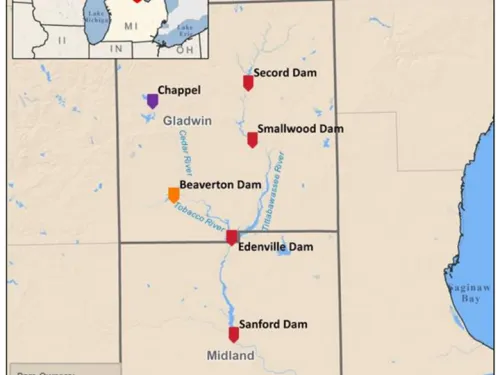
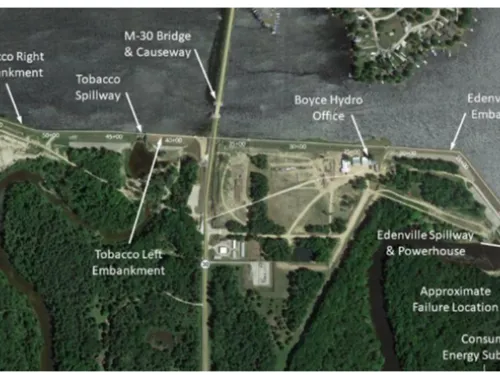
Lessons Learned
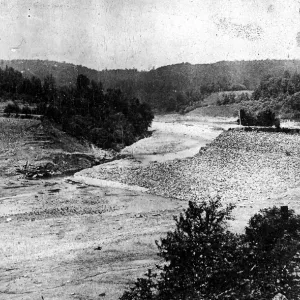
Dam incidents and failures can fundamentally be attributed to human factors.
Learn more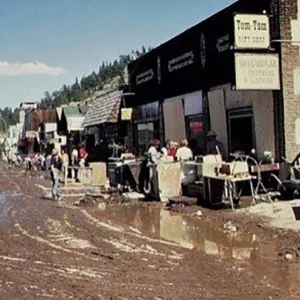
Dams should be thoroughly assessed for risk using a periodic risk review process including a site inspection, review of original design/construction/performance, and analysis of potential failure modes and consequences of failure.
Learn more
Dozens of dams can fail or be in danger of failing during a single event (i.e. swarming failures). Dam owners and regulators need to prepare for these types of events.
Learn more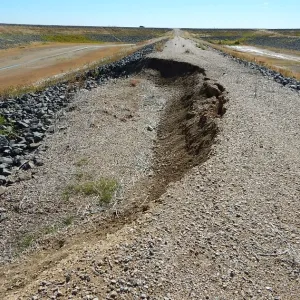
Earth and rockfill embankment dams must be stable under the full range of anticipated loading conditions.
Learn more
Emergency Action Plans can save lives and must be updated, understood, and practiced regularly to be effective.
Learn more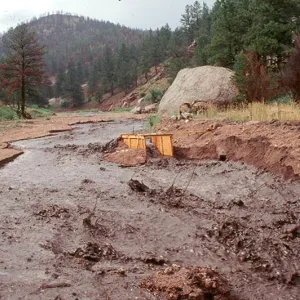
Floods can occur due to unusual or changing hydrologic conditions.
Learn more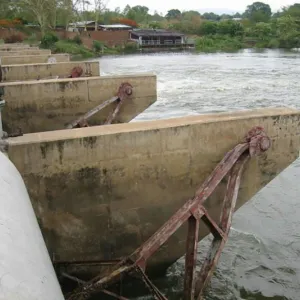
Gates and other mechanical systems at dams need to be inspected and maintained.
Learn more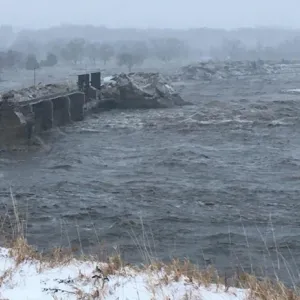
Past successful dam performance does not guarantee future successful performance.
Learn more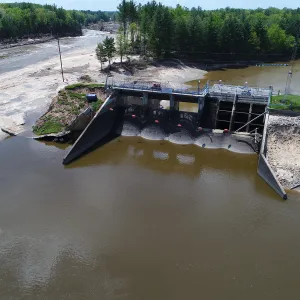
Static liquefaction should be considered as a potential failure mode for dams that have loose sands or silts in their embankments or foundations.
Learn more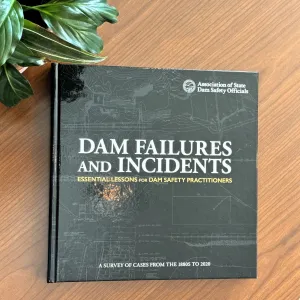
The Study of Past Dam Failures and Incidents is Essential for Keeping Today’s Dams Safe.
Learn more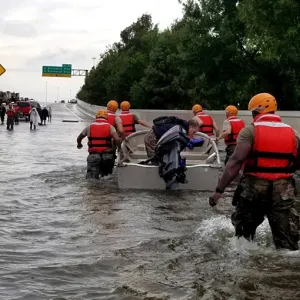
Timely warning and rapid public response are critical to saving lives during a dam emergency.
Learn more
2020 Edenville Dam Failure Lessons Learned

Edenville and Sanford Dam Failures
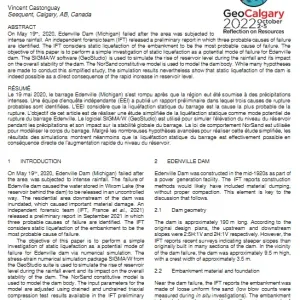
Investigating static liquefaction as a potential mode of failure for Edenville dam via numerical simulation
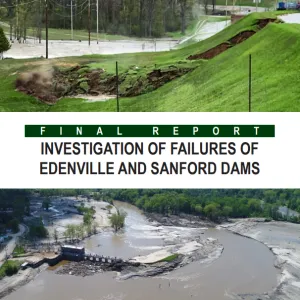
Investigation of Failures of Edenville and Sanford Dams - Final Report

Investigation of Failures of Edenville and Sanford Dams - Interim Report

Michigan Dam Incident Response Review

Modeling of the May 2020 Michigan Dam Breaches
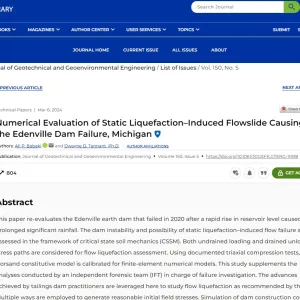
Numerical Evaluation of Static Liquefaction-Induced Flowslide Causing the Edenville Dam Failure, Michigan

